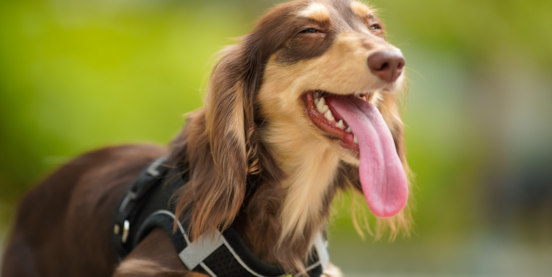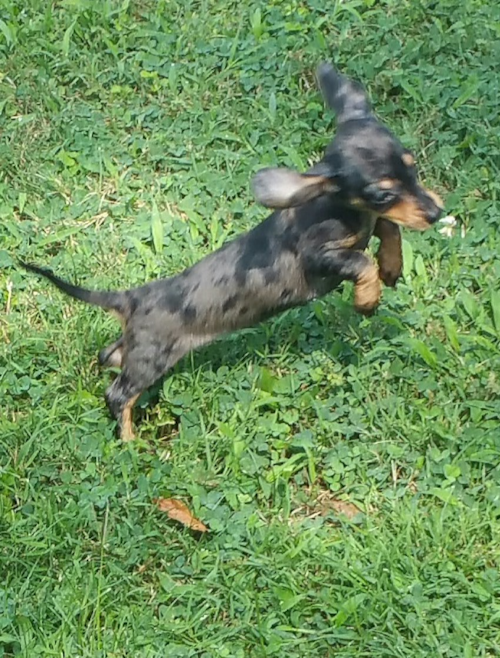

With its tiny legs, long body, and bold personality, the Dachshund is sure to catch your eye and make you fall head over heels. This amazing champion of dogdom is one of the favorite purebreds in the world. It enchants with its alert expression, friendly personality, and joyous disposition. The breed is a true adventurer and a loyal friend. An excellent companion pet in every sense, the Dachshund can be owned by any dog lover looking for a brave and sweet fur baby.
If you're considering a Dachshund as your companion, it's essential to know which breeds are the easiest to take care of. Dive into our blog to discover the top breeds for a happy home.
Characteristics
- Dachshunds are an old hunting breed, developed in Germany over 600 years ago
- The breed is also known as wiener dog, sausage dog, and badger dog
- The Dachshund temperament is balanced, with most dogs being calm and very outgoing
- The breed includes two sizes – mini and standard
- Cuddly and highly affectionate, the Dachshund dog makes a fantastic companion pet
- Although stubborn at times, the Dachshund puppy trains easily when properly motivated
- Thanks to its sweet nature, the Dachshund makes a terrific therapy dog
- A purebred dog that is easy to groom and care for, the Dachshund breed makes an amazing first pet for new owners
- The Dachshund is renowned for its strong bonds and loyalty to its humans

Appearance
Close to the ground, with a long body and short legs, the Dachshund is impossible to confuse thanks to its distinctive features. Though their reputation puts them in the lapdog ranks, Dachshunds are brave and alert dogs, an aspect that shows in the way they carry themselves. Their heads are held high, and their expressions are bold and alert.
According to the American Kennel Club’s breed standard, the Dachshund breed comes in two sizes, miniature and standard. The mini Dachshund stands at no more than 5 to 6 inches tall and typically weighs under 11 pounds. The Standard Dachshund stands 8 to 9 inches tall and can weigh between 16 to 32 inches.
The general appearance of the Dachshund includes dark, almond-shaped eyes that are highly expressive, a long, pointed muzzle, drop ears, and a long, muscular body. The Dachshund coat can be of three varieties: wirehaired, short, or longhaired. The legs of the breed are short, and the gait is smooth.
Dachshund colors are many, each more gorgeous than the other. Among the breed's most common colors are black, black and tan, black and cream, fawn, red, chocolate, chocolate and tan, cream, blue and tan, red, blue and cream, fawn and tan, wheaten, chocolate and cream, and fawn and cream. They can also be brindle, piebald, dapple, brindle piebald, and sable.
Photos
Temperament
Contrary to its small and adorable appearance, the Dachshund is a fearless and brave hound dog. Its nature is bold but friendly at the core. This dog makes friends with others easily, but its hunting instincts may have him alert around smaller animals.
The temperament of Dachshunds is very balanced. These dogs are naturally well-mannered and kind. They adore being surrounded by their family and friends. They play nice with children and are cuddly sweethearts at home. Their attachment to their family is renowned, as most Dachshund owners attest. They bond strongly and fast, and these bonds typically last their lifetime.
Although they are not an active dog breed, Dachshund dogs crave to be included in whatever activities their family is doing. They want to be part of a pack and are usually very attached to the hip. They are not built for long hikes or strenuous activities, but they do enjoy running alongside their humans and playing outdoor games of fetch and chase.
Insights

5 Amazing Things No One Told You About the Dachshund
A small but mighty dog, the Dachshund is one of the world's favorite dogs. Originally from Germany, where it made its reputation known for its hunting prowess, this dog comes fully equipped to enchant us all. Dachshunds can be small or medium-sized, but their personalities are big and mighty.
Stick with us to learn 5 amazing things about the Dachshund that no one told you before.
Table of Contents

Easiest Dog to Take Care of: Top 10 Breeds for a Happy Home
Do you ever dream about having a furry best friend who loves to play fetch, gives the warmest cuddles, and greets you with the happiest tail wags every time you come home? A friend who is not just any dog, but the easiest dog to take care of?
We know, it sounds like a dream come true, right? But we also understand that bringing a new puppy home is a big step. It's like adding a new member to your family, a little brother or sister...
Care
Grooming
Dachshunds are very easy to care for, given their low grooming requirements. They are moderate shedders, which means they do require brushing, but given their typically short coats, brushing can be done only once a week to keep them looking their dashing selves. Some Dachshunds have a longer coat, which can also be maintained with one or two weekly brushes.
As a breed that is naturally clean and almost odorless, baths aren't a necessity very often. Two or three baths every year will suffice for Dachshunds.
One of the most important grooming requirements Dachshunds have, is nail clipping. Because their nails tend to grow quite long, it is essential that you clip them every month. Long nails can be quite painful and hazardous. They can get stuck and cause painful breakage or simply be uncomfortable when stepping.
To understand how often you should bathe your Dachshund and get more grooming tips, check out our detailed guide: How Often Should You Bathe Your Dog Guide
Exercise Needs
Dachshunds are not the most athletic of dogs, but they do enjoy the occasional game and romp around the house or yard. Although they are not built for trekking or hiking, they do love to run and fetch their toys. Daily exercise is a must for their good health. These beautiful dogs should have a chance to burn energy at least twice a day. Two daily walks of 10 minutes each and some mentally stimulating games will work best in keeping these dogs happy and healthy.
Health
The Dachshund is a generally healthy dog breed that doesn’t typically have major health problems. Some of the health issues this breed can encounter include some of the more common issues among all small breeds. They can develop ear infections, much like most breeds with floppy ears, dental issues when dental care is not done properly, and hearing or vision difficulties during old age. Because they are a breed with short legs and a long back, they can suffer from back issues if their backs are strained from excessive exercise or weight.
Lifespan
One of the most long-lived breeds to exist in the world, the Dachshund enjoys a lifespan of 12 to 16 years. The breed’s excellent health is one of the main factors responsible for its longevity. A good diet with high-quality food, regular vet checks, and a moderate, daily exercise routine can have your Dachshund living up to 18 years. The oldest Dachshund to live reached the age of 21 years and 114 days. The second oldest Dachshund to live reached the age of 20.
Training
The Dachshund puppy is clever but also known to have a stubborn streak. Like most smart dogs, having average or above-average intelligence typically means that they will do as they are told if they are properly motivated. With Dachshund puppies, this rule applies. They are intelligent dogs that can learn anything and everything, but they need to be motivated with treats of their liking and praise.
Positive reinforcement works best when training Dachshunds, as does a reward-based method that includes their favorite toys and treats.
Most Dachshunds crave companionship and get highly attached to their owners to the point that they lack independence. To fix this and avoid your Dachshund suffering from separation anxiety, independence training is a must in early puppyhood. Practice leaving your puppy home for a few minutes at a time, gradually increasing the time you leave their sight. This will ease their anxiety and help them become more independent.
Socialization training and leash training should begin as soon as your puppy is fully vaccinated. Practice introducing new people and places as your puppy begins showing its natural curiosity. This should be done gradually, so as not to overwhelm the pup. Introduce one or two people at a time and make sure your puppy is comfortable during all interactions. The Dachshund is a naturally friendly dog that will do most of the work, so all you need is patience and practice.
Training a Dachshund can sometimes be challenging due to their intelligent yet stubborn nature. For more insights on training dogs effectively, explore our blog Easiest Dogs to Train - Top 5 Pups for Effortless Training
History
Dachshunds are an old breed of dog, dating back more than 600 years ago. The name Dachshund comes from Germany and translates to “badger dog”. The name was given to these dogs for their formidable skills in hunting badgers, which was their main job during those times. As historians attest, the breed’s long back and short legs were specifically designed to aid them in their badger-hunting job.
As they become famous for their badger hunting skills, Dachshunds started being noticed by other hunting enthusiasts, who quickly saw their potential. In just a few decades, Dachshund dogs became the favorite hunters for many. They moved on to hunt boars, deer, foxes, and of course, continued to hunt badgers.
From Europe, the long-bodied, short-legged beauties traveled to the United States where they were met with admiration. Their courageous nature, feistiness, and sweet personality caught the eye of many and were soon one of the favorite breeds in the country, which they still are today.
The Dachshund entered the American Kennel Club in 1885 and has since been one of America’s favorite companion pets. The breed is also known as the “wiener dog”, “sausage dog” and “badger dog”.





